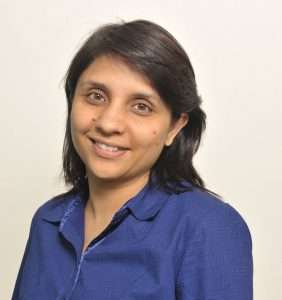Tough times don’t last but tough companies do. And tough companies sometime do even better in tough environment such as the present one. IDFC equity Opportunity Series 2 a closed-end diversified equity fund seeks to identify such performers and benefit from their superior strategies and performance.
FundsIndia had a Q&A with the fund manager Punam Sharma on how the fund seeks to make the best of the current corporate environment. The NFO is open until January 24, 2014.

What is your assessment of the current corporate environment?
The trend of returns on equity (RoE) of companies is strongly correlated to the state of the economy. Historical analysis of the S&P BSE500 companies clearly reflects the RoEs of the underlying companies started increasing from 2003 and peaked in 2007.
This said period coincided with a period of pick up in the external and internal demand environment, robust global and domestic GDP growth and a period of benign liquidity.
The strong demand environment during this period led to high capacity utilization, demand driven pricing power all boosting ROE and stock price performance.
The macroeconomic construct for India has significantly deteriorated since then resulting in suboptimal capacity utilization and no pricing power in the system resulting in lowest level of RoEs generated by the companies in relation to their historic performance. The reflection of the same can be seen in valuation and performance of certain stocks and sectors in the economy.
How do companies with operating leverage gain from such an environment?
Today we are in a consolidating environment where fresh capex is eluding the economy given the low spread between the return generated from doing business versus return generated through investing, which we believe will lead to return of pricing power and higher capacity utilisation – the main driver for improving ROE.
The asset turnover (Sales/Asset) is 0.99, which is the very low and is close to the levels seen during the crisis of 2000. This indicator implies that companies are not sweating the assets enough and there is lot of excess capacity sitting in the system. The opportunity is about identifying companies which have assets on the ground and a business matrix to support better productivity on the same.
Could you give examples of sectors or opportunities that are ripe to capitalise based on this theme?
The reality today is that we are not in a growth environment and we may continue to be in this phase for some time. The weak domestic macro environment, tighter capital conditions (both cost and availability) have impacted the business drivers across industries in some manner or the other.
As inefficient players get marginalised, capital efficient companies (across sectors) with balance sheet strength and operating matrix strength (pricing power, cost structure, business franchise) will be successfully able to navigate this transitory period.
Opportunities and examples exist across sector and come across in different forms. The basic premise is that RoEs of the companies have reached to a stress level and companies are already leveraged to level that they can’t raise more debt from the market.
There is lot of capacity sitting idle in the system and most companies have already announced a sharp reduction in capex. At the same time EBIT margins are at very low levels which seem to have stabilized over the last 2-3 quarters as companies have cut costs in response to slowing demand.
All this should lead to better profitability and better RoEs going forward. The improvement may come from better utilization of assets (brand , distribution, capacity, manpower), a better product mix, consolidation, market share gains and cost optimization.
Would more such opportunities be available in mid-sized companies? Could we expect the new fund to have bias for such companies?
The new fund offering has no market capitalization biases. It’s a bottom up approach to identify a set of companies which have the triggers / attributes to navigate a difficult economic environment. This may be by virtue of leadership position in a particular product category, an extremely competitive cost structure or technology edge. These are companies which will have a higher share of the profit pool in the industry.
Would 3 years be sufficient to fully capitalise on the opportunity you have in mind? Is there chance of exiting from the theme before fully exhausting its potential?
The current opportunity will be in a period of consolidation for some more time before investments and capex cycle picks up leading to a more optimistic growth scenario. The interim period of 2-3 years will be the time when:
- the government will be forced to adopt a path of fiscal restraint
- High inflation and current account vulnerability may not allow a free hand to policy makers
- There would be uncertainty around elections
The fund has been envisaged keeping the said period, where productivity and efficiency will be rewarded as growth will not be easy to come by.
The endeavor is to capture companies which have the drivers to enhance this productivity and efficiency without having to resort to incremental balance sheet growth. If the opportunity plays out earlier than expected we would endeavor to return money to shareholders through dividends early in the cycle of the product.
How would this fund be different from IDFC Premier Equity and Sterling Equity?
The new fund is a diversified equity fund which has been carved to capture a specific opportunity (as mentioned above) in a more focused and dedicated manner.
While IDFC Premier and Sterling equity funds will have undertones of the companies with operating leverage drivers it will be in a muted form than the current fund offering.







